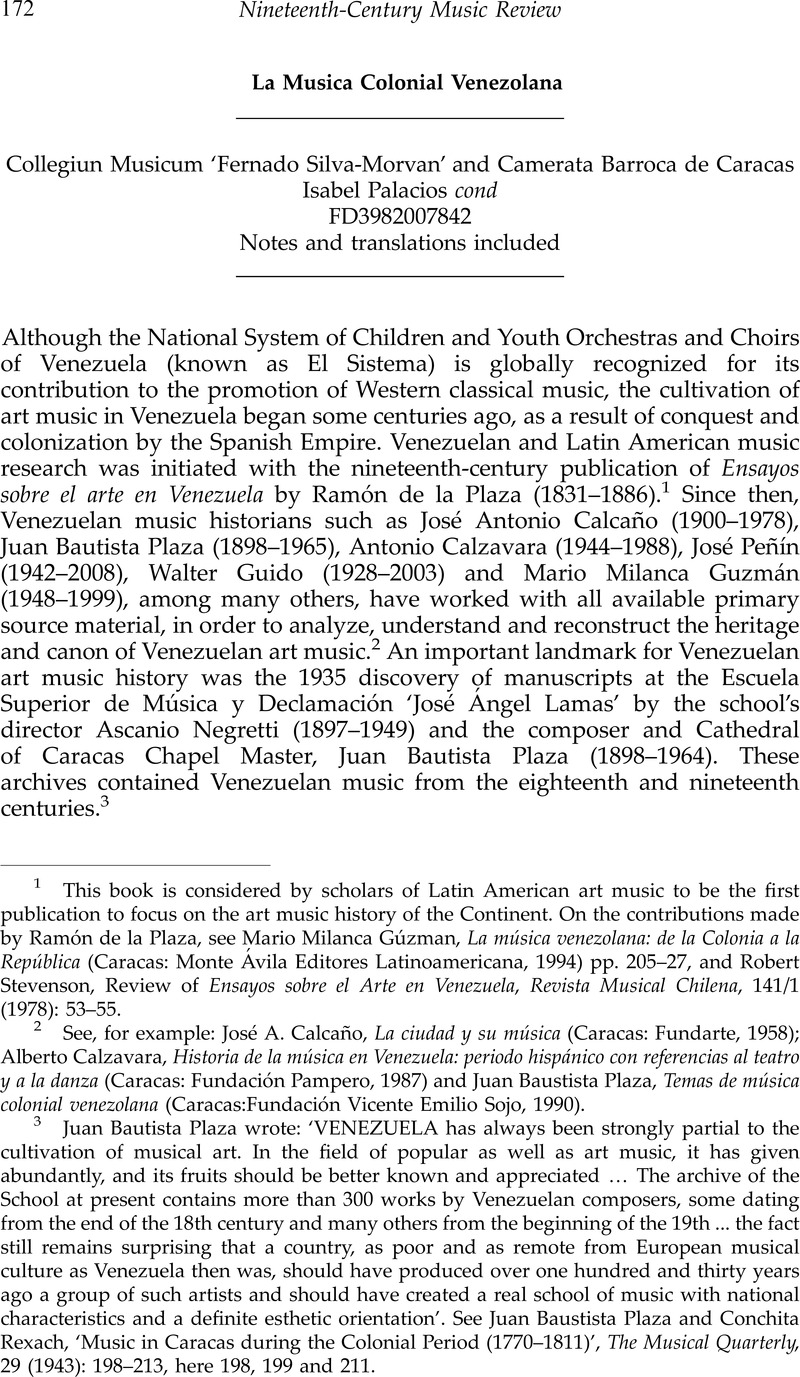No CrossRef data available.
Published online by Cambridge University Press: 05 August 2014

1 This book is considered by scholars of Latin American art music to be the first publication to focus on the art music history of the Continent. On the contributions made by Ramón de la Plaza, see Gúzman, Mario Milanca, La música venezolana: de la Colonia a la República (Caracas: Monte Ávila Editores Latinoamericana, 1994) pp. 205–227Google Scholar, and Stevenson, Robert, Review of Ensayos sobre el Arte en Venezuela, Revista Musical Chilena, 141/1 (1978): 53–55Google Scholar.
2 See, for example: Calcaño, José A., La ciudad y su música (Caracas: Fundarte, 1958)Google Scholar; Calzavara, Alberto, Historia de la música en Venezuela: periodo hispánico con referencias al teatro y a la danza (Caracas: Fundación Pampero, 1987)Google Scholar and Plaza, Juan Baustista, Temas de música colonial venezolana (Caracas:Fundación Vicente Emilio Sojo, 1990)Google Scholar.
3 Juan Bautista Plaza wrote: ‘VENEZUELA has always been strongly partial to the cultivation of musical art. In the field of popular as well as art music, it has given abundantly, and its fruits should be better known and appreciated … The archive of the School at present contains more than 300 works by Venezuelan composers, some dating from the end of the 18th century and many others from the beginning of the 19th ... the fact still remains surprising that a country, as poor and as remote from European musical culture as Venezuela then was, should have produced over one hundred and thirty years ago a group of such artists and should have created a real school of music with national characteristics and a definite esthetic orientation’. See Plaza, Juan Baustista and Rexach, Conchita, ‘Music in Caracas during the Colonial Period (1770–1811)’, The Musical Quarterly, 29 (1943): 198–213CrossRefGoogle Scholar, here 198, 199 and 211.
4 The book of Michailos, David Coifman, De Obispos, Reyes, Santos y Señas en la Historia de la Capilla Musical de Venezuela (1532–1804) [Bishops, Kings, Saints and Signs in the History of the Musical Chapel from Venezuela (1532–1804)Google Scholar, won the musicology award in 2008 of La Sociedad Española de Musicología [Spanish Society of Musicology] and was published by the same institution in 2010.
5 The Banco Mercantil has a well-established sponsorship of these ensembles, especially in promoting their concert tours throughout Venezuela.